ANGOLA
Population

Population

Population
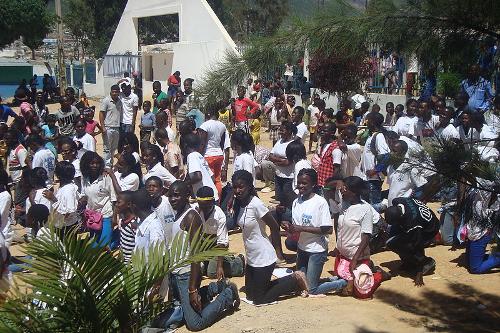 Population AngolaPhoto: Jorg brino CC 4.0 International no changes made
Population AngolaPhoto: Jorg brino CC 4.0 International no changes made
General
The last official census conducted by the Portuguese colonizer was in 1970 and estimated the population at 5.5 million. Since then, the effects of the civil war have had a huge effect on the demographic situation in Angola. Up to one million Angolans were killed, large numbers fled abroad and up to half a million (mainly Portuguese settlers) returned to Portugal or emigrated to South Africa; of those who remained, between 2.5 and 4 million were internally displaced, with many seeking the relative safety of Luanda or other major cities. A partial census was conducted in 1981, but due to security restrictions, it covered only about 50% of the population and did not include entire counties.
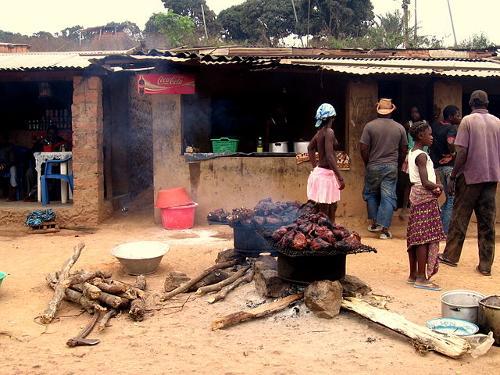 Typical street scene in an unknown Angolan villagePhoto: Paulo César Santos in the public domain
Typical street scene in an unknown Angolan villagePhoto: Paulo César Santos in the public domain
In 1988, the Angolan government estimated the population at nearly 9.5 million. Now most of the population is concentrated in urban areas such as Luanda, Huambo, Lubango and Benguela, and in the central plateau. The east and southeast of the country are nearly depopulated with densities of less than 10 inhabitants per km², making Angola one of the most urbanized countries in Africa. In May 2014, Angola conducted a national census for the first time since independence, which showed the country had a population of 25.79 million. About 47.2% of the population is under 15 years of age while 65% of the population is under 25 years of age. The Angolans are predominantly of Bantu ethnicity and about 75% belong to one of the three major ethnic groups.
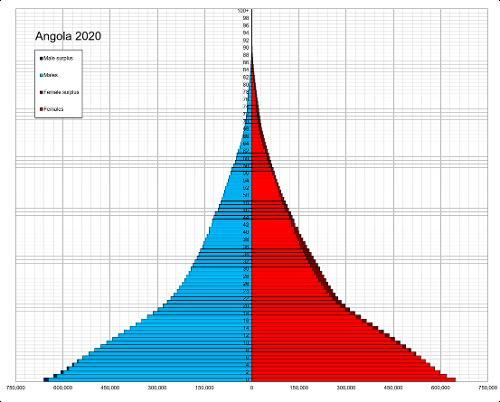 Population pyramid Angola (2020)Photo: Sdgedfegw CC 4.0 no changes made
Population pyramid Angola (2020)Photo: Sdgedfegw CC 4.0 no changes made
Demographic data
About 37 million people lived in Angola in 2024. The population density is low and is about 29 inhabitants per square kilometer.
- Natural population growth is 3.33% (2024)
- Birth rate per 1000 inhabitants is 41.4 (2024)
- Death rate per 1000 inhabitants is 7.6 (2024)
- The average life expectancy is 62.9 years, men 60.8 years and women 65.1 years (2024)
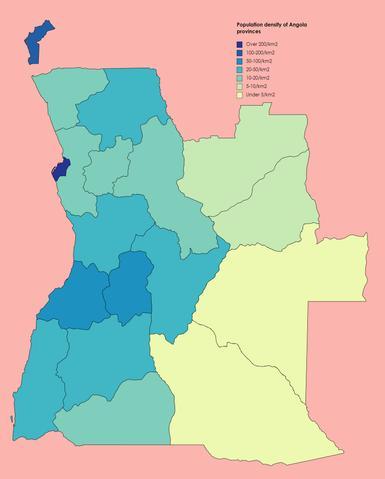 Population Density Provinces of AngolaPhoto: Austiger CC 4.0 no changes madeP
Population Density Provinces of AngolaPhoto: Austiger CC 4.0 no changes madeP
Population composition
The population is made up of nine major Bantu groups (with the exception of a Portuguese minority in Luanda and a small group of Kung nomads). These nine Bantu groups are divided into about a hundred tribes. The Ovimbundu, about 37% of the population in 2021, the Mbundu (about 25%) and the Bakongo (about 13%) are the largest ethnic groups.
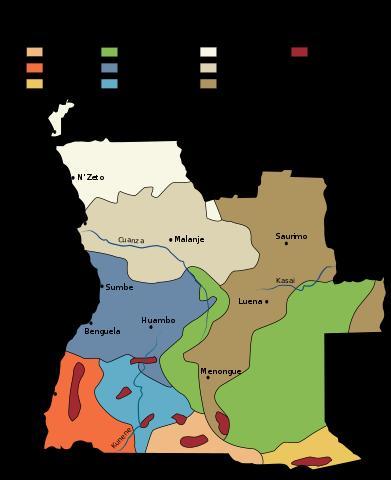 Ethnic Groups in AngolaPhoto: Jon C CC 3.0 no changes made
Ethnic Groups in AngolaPhoto: Jon C CC 3.0 no changes made
Refugee issue
The civil war had the greatest impact on the inhabitants of the central and southern provinces of Angola, causing massive displacements and the creation of a significant refugee population in the Democratic Republic of Congo, Zambia, Namibia and Botswana. According to a survey by the World Food Program, 67% of Angolans have been displaced at least once in their lifetime. Many settled in IDP camps run by international aid agencies. However, the younger and more affluent moved to the cities, with Luanda gobbling up the three million people.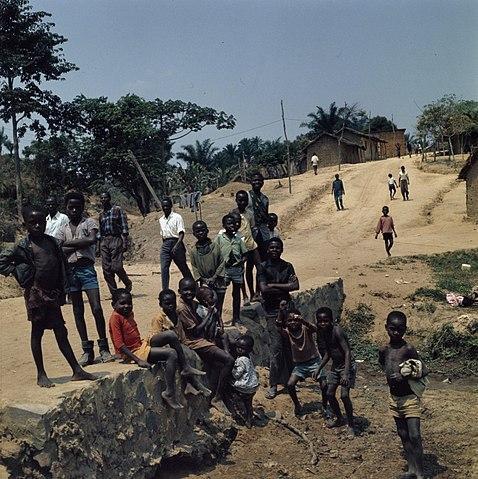 Angolan refugees in Zaire (Now: Democratic Republic of the Congo)Photo: Rob Mieremet CC 3.0 no changes made
Angolan refugees in Zaire (Now: Democratic Republic of the Congo)Photo: Rob Mieremet CC 3.0 no changes made
By 2005, more than half of the 4.1 million people displaced during the hostilities had returned to their areas of origin, and by 2007, about 80% of the estimated 600,000 people who had sought refuge in neighboring countries , returned home. At the end of 2011, there were still some 130,000 Angolan refugees in exile, mainly living in the neighboring countries of Zambia, Namibia, South Africa and the Republic of Congo.
The expectation has always been that most returnees would settle back in their area of origin, but the migration to Luanda continues unabated. About 80% of those who have moved to Luanda remain in the capital and have few plans to leave. While life in the "musseques" (slums) of Luanda is grim, for many it is preferable to a return to the countryside where unemployment is skyrocketing and minimal (but slowly improving) amenities such as health care, water supply and education.
Sources
BBC - Country Profiles
CIA - World Factbook
Elmar Landeninformatie
Oyebade, Adebayo / Culture and customs of Angola
Greenwood Press
Stead, Mike / Angola
Lonely Planet
Copyright: Team The World of Info